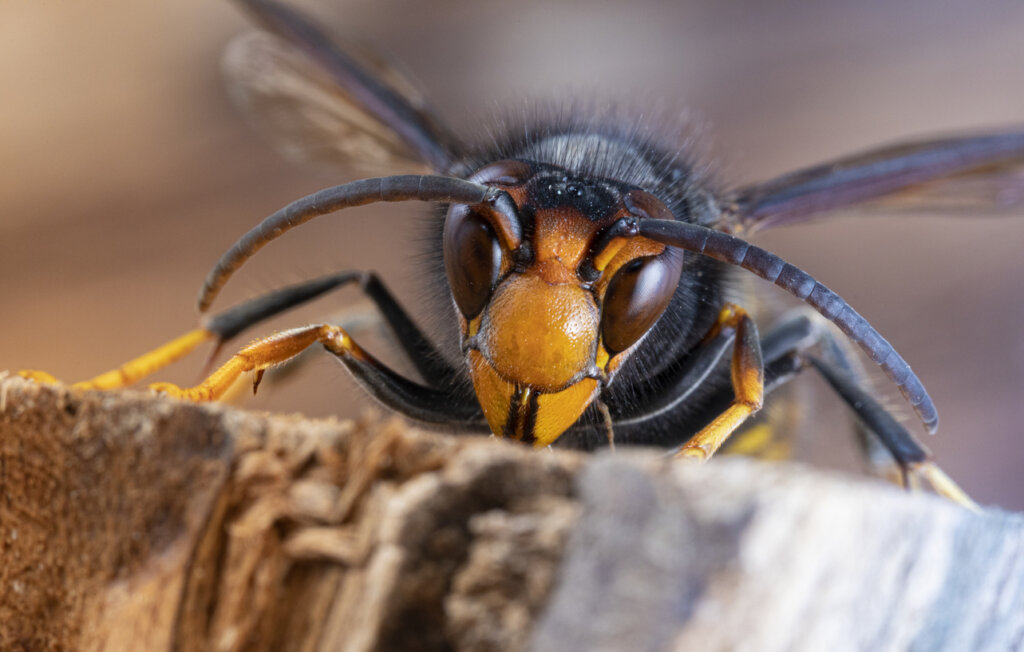After discovering a hornet she didn’t quite recognize, a beekeeper in Savannah, Georgia, put in a call to the Georgia Department of Agriculture (GDA). They identified it as a yellow-legged hornet. A nearby store selling products from beekeepers realized they had been seeing yellow-legged hornets in their gardens for about a week now! Why is all this important? Yellow-legged hornets aren’t exactly from around here.
Native to Southeast Asia, yellow-legged hornets were accidentally introduced to Europe, Japan, and South Korea in 2002. They are now an considered an invasive species there. In 2004, they spread throughout Europe after finding their way to France. The yellow-legged hornet has even made its way to parts of the Middle East. They seem to be able to thrive (and multiply) just about anywhere!
Should We Worry About the Yellow-Legged Hornet?
The one found in Georgia marks the first sighting of this invasive species– in the wild and alive – in the United States. While in general, the insect is not a big threat to humans – yellow-legged hornets don’t usually sting unless they feel you’re threatening the hornet’s nest – the fact about this hornet is: experts say it could harm the local environment and economy – primarily the honeybee.
This particular hornet eats a number of arthropods and will even eat dead animals, but they would much rather have their favorite: the honeybee. They can actually target a bee and grab it out of the air midflight. If this hornet finds a home in Georgia, it will undoubtedly expand to nearby states – they’re just a hop, skip, and a fly from us in Kentucky. The vast majority of plant species – almost 90% – rely on pollinators like the honeybee to reproduce. This hornet could threaten the agricultural industry in Georgia and the surrounding areas.
We asked our Division Technical Director and Board Certified Entomologist, Jennifer Brumfield, about it. She said, “The introduction of the yellow-legged hornet creates challenges for both honeybees and humans. With its predation on honeybees and potential stings to people, a strategic and coordinated approach is essential to mitigate its impact on pollinators and ensure the safety of our communities.”
What Does the Yellow-Legged Hornet Look Like?

The adult hornets are a little less than an inch long – still large enough to cause a stir. Their legs are at least partly yellow, but the colors of their bodies and heads can vary. They can look like a black hornet with yellow legs, look fuzzy, have a yellow face, and still be an alarming size. While you probably want to keep your distance, you don’t need to be very close to not mistaken them for a wasp. Many native species of these hornets look similar to the yellow-legged hornet, so don’t just assume, though. Yellow-legged hornets build above-ground, egg-shaped paper nests, often in trees, that can (and will) host 6,000 workers on average. Their nests might also be in shrubs, bushes, or on building rooftops. Queens typically lay eggs in April while workers become active in June. The nests grow in number from spring to fall.
How Can I Get Rid of Yellow-Legged Hornets?
The GDA has created a form through which people can report yellow-legged hornet sightings. Seems that the important thing right now is to find out where they and how fast they are moving rather than getting rid of them. The GDA asks people to include their contact information, the date and location of the sighting, the location and height of the nest, and the direction the hornet flew away (get out your compass). They also ask people to include a photograph if one can be safely taken, or at least a description of the insect and any damage they may have done.
Remember the murder hornet scare of 2022? That turned out to be a big nothing – happily! But the spotted lanternfly came, saw, and spread throughout the Northeast! If they can do it, so could the yellow-legged hornet. Let’s hope they don’t.